 Movies and TV
Movies and TV  Movies and TV
Movies and TV  History
History 10 Things You Didn’t Know About the American National Anthem
 Technology
Technology Top 10 Everyday Tech Buzzwords That Hide a Darker Past
 Humans
Humans 10 Everyday Human Behaviors That Are Actually Survival Instincts
 Animals
Animals 10 Animals That Humiliated and Harmed Historical Leaders
 History
History 10 Most Influential Protests in Modern History
 Creepy
Creepy 10 More Representations of Death from Myth, Legend, and Folktale
 Technology
Technology 10 Scientific Breakthroughs of 2025 That’ll Change Everything
 Our World
Our World 10 Ways Icelandic Culture Makes Other Countries Look Boring
 Misconceptions
Misconceptions 10 Common Misconceptions About the Victorian Era
 Movies and TV
Movies and TV The 10 Coolest Stars to Set Sail on The Love Boat
 History
History 10 Things You Didn’t Know About the American National Anthem
 Technology
Technology Top 10 Everyday Tech Buzzwords That Hide a Darker Past
Who's Behind Listverse?

Jamie Frater
Head Editor
Jamie founded Listverse due to an insatiable desire to share fascinating, obscure, and bizarre facts. He has been a guest speaker on numerous national radio and television stations and is a five time published author.
More About Us Humans
Humans 10 Everyday Human Behaviors That Are Actually Survival Instincts
 Animals
Animals 10 Animals That Humiliated and Harmed Historical Leaders
 History
History 10 Most Influential Protests in Modern History
 Creepy
Creepy 10 More Representations of Death from Myth, Legend, and Folktale
 Technology
Technology 10 Scientific Breakthroughs of 2025 That’ll Change Everything
 Our World
Our World 10 Ways Icelandic Culture Makes Other Countries Look Boring
 Misconceptions
Misconceptions 10 Common Misconceptions About the Victorian Era
10 Forgotten Conquerors From Ancient History
In Shelley’s famous poem Ozymandias, a broken statue lies in the empty desert, its pedestal hollowly boasting, “My name is Ozymandias, king of Kings; Look on my Works, ye Mighty, and despair!”
The conquerors on this list boasted that they had “all the lands at [my] feet” or promised to make “Egypt taste the taste of my fingers!” But in the end, they, too, have been largely forgotten. Look upon their works and despair.
10Lugalzagesi
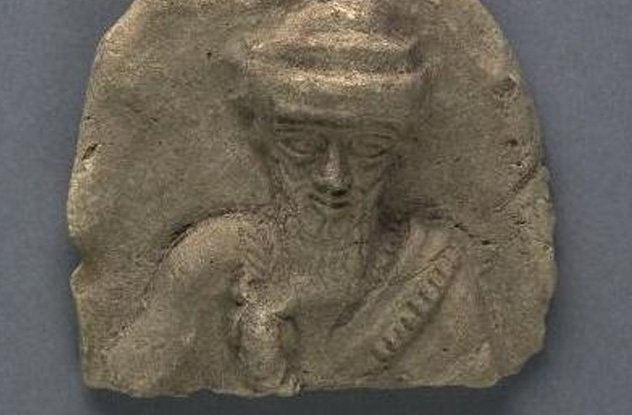
Civilization was born in ancient Sumeria, in the rich lands between the Tigris and Euphrates rivers. But by 2330 BC, the region was in an uproar and ancient cities lay in ruins. The culprit was Lugalzagesi, the king of Umma. Before inheriting the throne, Lugalzagesi was a priest of the goddess Nisaba and he has been labeled an “ecstatic” and a “bone fide berserk” by historians seeking to explain the unprecedented destruction he unleashed.
Shortly after inheriting the throne of Umma, Lugalzagesi also became king of Uruk, probably through marriage. He then launched a series of frenzied campaigns against the kingdom of Lagash, eventually conquering the city itself. A priest of Lagash reported that he “set fire to the [temples] . . . he plundered the palace of Tirash, he plundered the Abzubanda temple, he plundered the chapels of Enlil and Utu.”
In another inscription, the defeated king of Lagash bitterly cursed the conqueror: “The leader of Umma, having sacked Lagash, has committed a sin against Ningirsu. The hand which he has raised against him will be cut off! May Nisaba, the god of Lugalzagesi, ruler of Umma, make him bear the sin.”
But the conquest of Lagash only increased Lugalzagesi’s strength. Before long, he was ruler of all Sumeria, lord of primeval cities like Ur, Zabala, and Nippur. His armies raided from the Persian Gulf to the Mediterranean: “Enlil, king of all lands, gave to Lugalzagesi the kingship of the nation, directed all eyes of the land toward him, put all the lands at his feet . . . from east to west, Enlil permitted him no rival.”
Enlil must have changed his mind. Lugalzagesi’s conquests soon brought him into conflict with a minor ruler named Sargon. In a stunning upset, Sargon’s well-drilled troops defeated the primitive armies of Sumeria. Lugalzagesi was paraded in chains through Nippur and was soon all but forgotten, while Sargon of Akkad went on to found the first great empire in history.
9Modu Chanyu

The horse was first domesticated on the great Eurasian Steppe, the seemingly endless ocean of grass that runs from Mongolia to Eastern Europe. Every so often, the nomadic horsemen of the plains would unite under some great ruler and erupt on the civilized world. Some of these conquerors remain famous—-Attila, Genghis, Timur the Lame—-but Modu Chanyu, who was one of the earliest, is now almost forgotten in the West.
Modu’s father was king of the Xiongnu, a people who lived in what is now Mongolia. The king preferred Modu’s brother, so Modu had him killed and took power anyway. According to the Chinese historian Sima Qian, Modu invited his bodyguards for some archery practice and told them to use his favorite horse as a target. When some objected, Modu immediately executed them. Then, he told them to use his wife as a target. Again, some objected, and Modu killed them on the spot. Finally, he told the survivors that their new target was his father. They shot him without hesitation.
After murdering his siblings, Modu launched lightning campaigns against the Donghu and Yuezhi, forming a sprawling empire that stretched across the eastern steppes. In 200 BC, he lured the Chinese Emperor Gaozu into an ambush and forced him to sign a humiliating treaty. The Chinese had to pay tribute and Gaozu agreed to give his daughter as a concubine to Modu (he sent some other girl and lied that she was his daughter instead).
In a way, Gaozu was lucky—-the king of Yuezhi had his skull turned into a drinking cup by Modu’s son. Modu himself died in 174 BC, as the ruler of an empire that rivaled Alexander the Great’s in size.
8Cyaxares
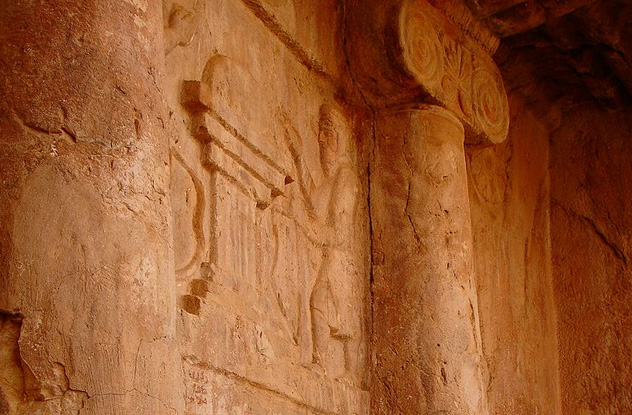
For centuries, the mighty Assyrian Empire dominated the ancient Middle East. Its influence even extended to the lands of the Medes, in what is now Iran. The Medes had mixed feelings about this and a nobleman named Phraortes led a revolt around 653 BC. But the bowmen of Assyria were justly feared, and the rebellion was crushed. Phraortes was executed and his grieving son Cyaxares swore to finish what his father had started.
This was no mean task, particularly considering that the Scythians had invaded Media in the meantime. But Cyaxares quietly submitted to Scythian rule until he was able to lure their leaders to a banquet. Once the Scythians were drunk, Cyaxares had them slaughtered. Next, he united the Medes into one kingdom under his command. He reformed the Mede army with new weapons and a focus on horsemen, which the Assyrians lacked.
In 614 BC, the Medes attacked, sacking the Assyrian stronghold at Ashur. Over the next two years, they ground closer to the Assyrian capital Ninevah, which fell in 612. Cyaxares had avenged his father and destroyed the greatest empire of the day. The Median Empire seemed destined to dominate the ancient world—-and it might have, had Cyaxares’s successor not had the misfortune to cross an young man called Cyrus, the leader of an obscure tribe called the Persians.
7Nabopolassar
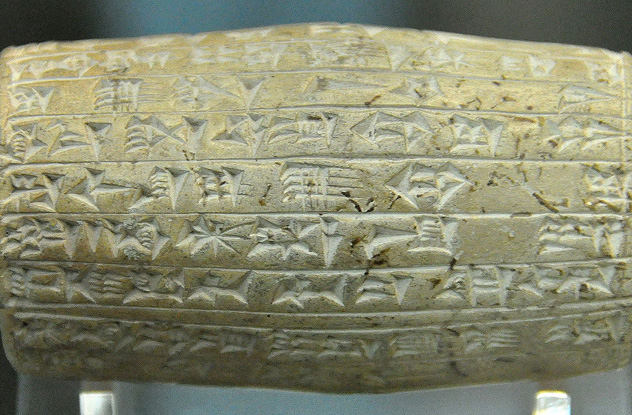
But Cyaxares and the Medes weren’t alone in the great war against Assyria. To overthrow such a mighty empire, they formed an alliance with Nabopolassar, a rebel who had made himself king of the ancient city of Babylon.
Babylon was one of the jewels in the crown of the Assyrian Empire, but the Assyrians were cruel and greedy rulers, and the sprawling city always longed to regain its former independence. It revolted in 705, but the Assyrian king Sennacherib came down like the wolf on the fold and virtually leveled the city after a devastating siege. Another revolt in 651 was crushed almost as severely.
Nabopolassar himself was born to an obscure tribe of Chaldeans outside Babylon and even his monuments describe him as the “son of a nobody.” But he became a famed resistance leader, leading a guerrilla campaign centered in the marshy delta region of the Tigris and Euphrates. When the citizens of Babylon overthrew their governor in 630 BC, they invited the dogged veteran to become their king.
For 15 years, Nabopolassar fought a desperate campaign to dislodge the Assyrians from Babylonia. By 616, he had succeeded and was able to launch attacks on Assyria itself. In 612, he signed a treaty with Cyaxares and their combined forces destroyed Ninevah. Afterward, they split the Assyrian Empire between them. Nabopolassar then destroyed an Assyrian rump state in Syria, while his forces defeated an Egyptian attempt to intervene.
Nabopolassar died in 605 and the Neo-Babylonian Empire he founded crumbled when Cyrus the Great’s Persians appeared outside Babylon a few decades later.
6Piye
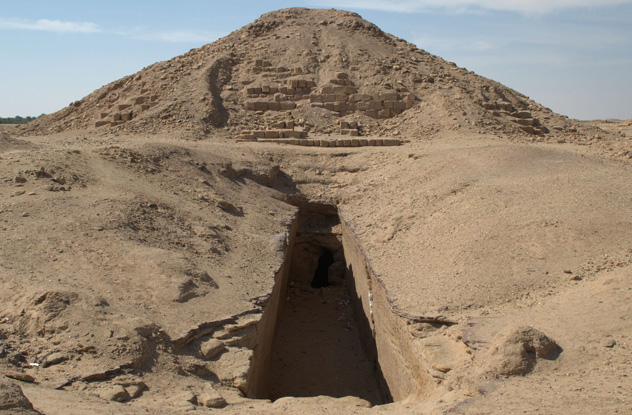
In the eighth century BC, the ancient kingdom of Egypt had collapsed into chaos. Minor kings squabbled over the cities, and the north was dominated by Libyan warlords, who were less than keen on the Egyptian gods. Concerned, the priests of Amun looked south to Nubia, to the “Black Pharoahs” of Kush. This powerful African kingdom was heavily influenced by Egypt (to this day, Sudan has more pyramids than Egypt itself). Now, Kush found itself keeping Egyptian culture alive.
Unlike most of the people on this list, the Kushite Pharaoh Piye was a rather reluctant conqueror. Although his influence extended over southern Egypt, he might have been happy to let the north go its own way. But Piye was a true believer and couldn’t allow Amun to be disrespected. A famous monument records his rage: “I swear, as Re loves me, as my father Amun favors me, I shall go north myself . . . And I shall let Lower Egypt taste the taste of my fingers!”
Sure enough, Piye’s armies stormed up the Nile, sprinkling themselves in holy water before each battle. The Libyan fleet burned on the Nile, while the Nubians stormed Hermopolis and Memphis. The Delta lord Tefnakht surrendered, writing to Piye that “I cannot stand before your flame, I dread your grandeur.” Then, having achieved total victory, the pious Piye withdrew and returned to his home in Nubia.
Unsurprisingly, his successor Shabaka was less retiring and returned to Egypt in 719 BC, mopping up the remaining opposition founding the 25th Dynasty of Ancient Egypt.
5 Dhu Nawas

In the sixth century AD, the last Jewish king of Arabia watched a bloody battle rage along a beach in Yemen. His name was Yusuf Al-As’ar, but due to his flowing hair, he was usually known as Dhu Nawas, “Lord of the Sidelocks.” Seeing that his enemies were victorious, he turned and spurred his heavily armored horse into the Red Sea, which was living up to its name with the blood of the fallen. Before long, the waves had swallowed him up.
In the decades before the arrival of Islam, Yemen was caught up in the struggle between Zoroastrian Persia and the Christian powers of Byzantium and Abyssinia (modern Ethiopia). In fact, Abyssinian governor had ruled Yemen before Dhu Nawas seized power. It’s possible that his conversion to Judaism was intended to assert his independence from both Persia and Abyssinia. Either way, the chronicles agree that he launched a campaign against the Abyssinians Christians in Yemen, massacring them wherever possible.
By around AD 525, Dhu Nawas was complete control of the Yemen. Unsurprisingly, this didn’t go down well in Abyssinia and the Negus (king) Kaleb soon launched a full-scale invasion from his capital at Axum. Always proactive, Dhu Nawas met the Africans on the beach they tried to land on, but the Abyssinians were simply too powerful and before long he was forced to undertake his famous ride into the sea.
4Brennus
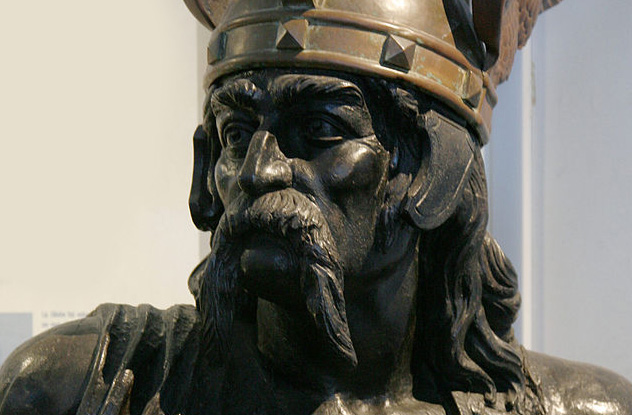
Under Alexander the Great, the Greeks and Macedonians conquered much of the known world. But after Alexander’s death in 323 BC, his successors fell to warring with each other, and his empire collapsed. Just over 40 years later, things had deteriorated to the point that an army of Celtic tribesmen were able to sweep down from the north and plunder his old kingdom of Macedon.
The Gauls were led by a chieftain known as Brennus, who had brought together a large army from various tribes. After raiding Macedon, Brennus (which might actually be a title rather than a name) proposed heading south for the even richer target of Greece. Panicked, the Greeks threw together an alliance and decided to make a stand at the pass of Thermopylae, where the 300 of Sparta had faced the Persians many years before.
But Brennus was no fool and sent troops to raid the exposed Greek state of Aetolia. Panicked, the Aetolians abandoned Thermopylae to defend their lands, leaving the defenders reduced in numbers. Next, Brennus paid the locals to show him the same path Xerxes had once used to outflank the 300. Sensing which way the wind was blowing, the Greeks declined to make another last stand and managed to make a break for it onboard the Athenian navy.
Brennus now had Greece at his mercy and he marched on the rich oracle at Delphi. But the Gauls fell to arguing among themselves and were delayed. Just as they were about to attack Delphi, a sudden snowstorm set in. The Greeks, claiming a miracle, attacked and drove the Celts back into the north. But for many years after, there were rumors of a sacred pool in Gaul, glimmering with sacrificed Greek gold and jewels.
3Pachacuti
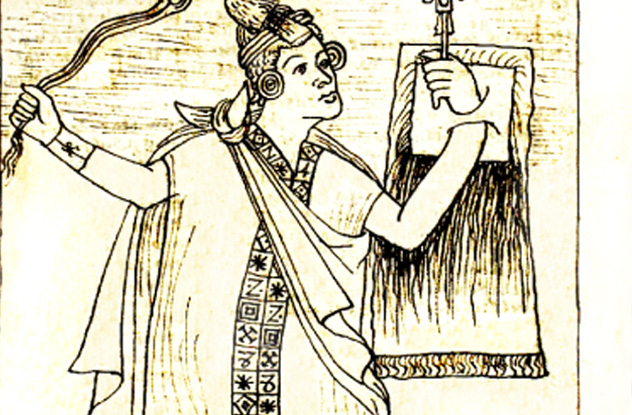
In the 15th century, a Peruvian group known as the Chanca were vigorously expanding their state. The Chanca had a large and experienced army and talented generals, and few dared stand against them. Around 1438, they decided to attack Cuzco, the capital of an obscure mountain people known as the Incas. The Incan ruler Viracocha and his heir, Urcon, sensibly abandoned the capital and fled. But Viracocha’s son Cusi Yupanqui refused to run.
Mustering a few loyalists, Cusi Yupanqui somehow managed to defeat the Chanca in a battle in which even the stones rose from the field and came to his aid. That boast might reflect the reality of how Cusi Yupanqui managed to defeat the larger Chanca army—-in later years the Inca had a penchant for crushing their enemies in rockslides. In any case, Cusi Yupanqui emerged triumphant and took a new name, Pachacuti, which means “Earthshaker.” His cowardly father was deposed and his brother was murdered and Pachacuti set out to make the Inca into an empire.
First, Pachacuti attacked the cities surrounding Cuzco, using the excuse that they hadn’t come to help the Inca when the Chanca attacked. Once he had established a solid power base, he struck out wider, conquering huge and ancient provinces: Vilcas, Soras, Aymaraes, Omayasos. When his general Capac Yupanki conquered the north, Pachacuti welcomed him back with open arms and then had him immediately executed, before he could become a threat.
By the time Pachacuti was an old man, the Inca were the dominant power in Peru. Finally satisfied, the Earthshaker passed the army over to his son and quietly retired to relax and tinker around with Cuzco’s architecture.
2Zenobia
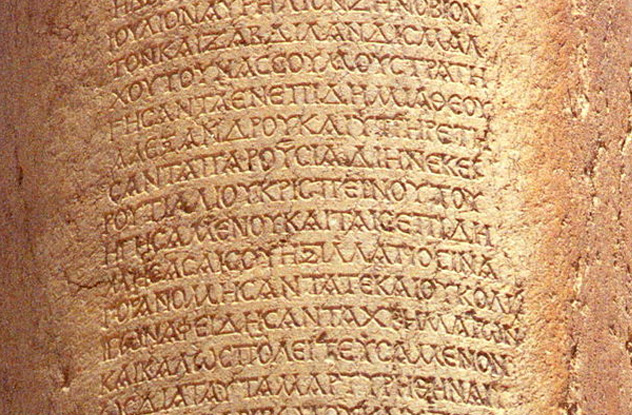
Of course, very few women ruled in their own right in the ancient world, but the few who did were usually more than a match for their male peers. Take Zenobia, Queen of Palmyra, who was so tough she marched on foot with her troops and often outdrank them as well. In the third century AD, Zenobia cobbled together a short-lived empire that spanned from Egypt to Turkey and seemed a real threat to the power of Rome.
Her rise to power started when she married Lucius Odaenthus, the Roman governor of Syria. The two apparently made a formidable team, although Zenobia famously refused to actually sleep with her husband except to conceive their only son. In 266 BC, Lucius was mysteriously assassinated, along with his son from a previous marriage. Instead of waiting for Rome to appoint a new governor, Zenobia gave the position to her young son and appointed herself as regent.
At the time, Rome was ruled by a succession of short-lived emperors who were too busy being murdered to challenge Zenobia. Next, she turned her gaze to Egypt. Not wanting to completely break with Rome, she sent an agent to Egypt to start a rebellion against Rome. Then her armies swooped in to crush the “rebellion” and return Egypt to Roman rule—-via Zenobia’s court in Palmyra of course. Unfortunately, an actual Roman army turned up in Egypt, forcing Zenobia to show her true colors and slaughter them.
Sensing which way the wind was blowing, the whole Roman east rapidly swore allegiance to Zenobia. But winds change, and Rome eventually did find a competent emperor in the old soldier Aurelian, who defeated Zenobia in a hard fought campaign (she escaped at least three sieges, in one case alone on a camel holding her son). The Queen of Palmyra was taken back to Rome, where she was allowed to live out her old age in quiet obscurity.
1Lord 8 Deer Jaguar Claw
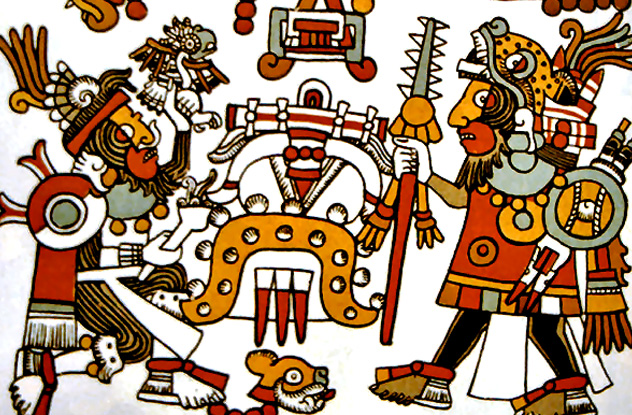
In the 11th century, the Mixtec were a squabbling group of principalities on the Pacific coast of Mexico. They chronicled their history in codices that combined pictures and words in a way not unlike a modern comic books. Many of the codices tell the story of the conqueror 8 Deer Jaguar Claw, who rose to great heights and met a tragic end.
8 Deer Jaguar Claw was born into the royal family of Tilantongo, but he wasn’t in line for the throne. So at 18 he sought out a meeting with the oracle Lady 9 Grass, a terrifying figure who seems to have lacked any flesh on her lower jaw. The codices are a little unclear, but either 9 Grass advised 8 Deer to journey to the shore, or exiled him there. Either way, 8 Deer and his followers left Tilantongo and founded a coastal town called Tututepec.
Now 8 Deer’s genius really started to show through. He formed an alliance with a group of Toltec merchants, who were eager to acquire coastal goods like salt and cacao. With the profits, 8 Deer began a campaign of conquest, starting with small villages along the shore and moving on to larger cities inland. As his wealth and power grew, the other members of Tilantongo’s royal family started dying, putting him closer to the throne. Doubtless 8 Deer was shocked when a last brother was mysteriously stabbed to death, making him the new king.
8 Deer’s next move was to launch an assault on Tilantongo’s ancient enemy, a city known as Red-And-White Bundle. This was personal for 8 Deer, because he had long been secretly in love with 9 Monkey, wife of Red-And-White Bundle’s king. Tragically, 8 Deer stormed into the enemy palace to find 9 Monkey and her husband dying. In an uncharacteristic moment of weakness, 8 Deer couldn’t bring himself to execute 9 Monkey’s son. It was a mistake.
Before long, 9 Monkey’s son had escaped his imprisonment and made his way to the Zapotec Empire, which was concerned at the thought of 8 Deer uniting the Mixtec. With a Zapotec army at his back, 9 Monkey’s son returned and defeated the aging 8 Deer. The conqueror was personally executed by the boy he had spared for love.








